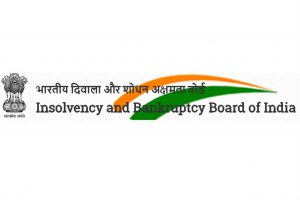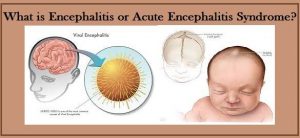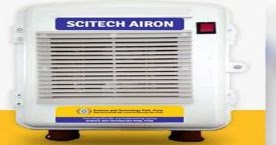Table of Contents
Daily Current Affairs for Government Exams:
Today Current Affairs:31st March 2020 for UPSC IAS exams, State PSC exams, SSC CGL, State SSC, RRB, Railways, Banking Exam & IBPS, etc.
Contents:
- “Companies Fresh Start Scheme, 2020” and revised the “LLP Settlement Scheme, 2020
- Insolvency and Bankruptcy Board of India Regulations, 2016 (CIRP Regulations) :
- .Acute Encephalitis Syndrome (AES):
- Scitech Airon
- .GreenCo Rating system
- SUNRISE mission
- Other important current affairs
1. “Companies Fresh Start Scheme, 2020” and revised the “LLP Settlement Scheme, 2020”:

Ministry of Corporate Affairs has introduced the “Companies Fresh Start Scheme, 2020” and revised the “LLP Settlement Scheme, 2020” to provide relief to law-abiding companies and Limited Liability Partnerships (LLPs) in the wake of COVID 19.
- The Schemes gives longer timelines for corporates to comply with various filing requirements under the Companies Act 2013 and LLP Act, 2008.
- Both the scheme is a one-time waiver of additional filing fees for delayed filings by the companies or LLPs with the Registrar of Companies during the period starting from 1st April 2020 and ending on 30th September 2020.
- The Schemes also significantly reduce the related financial burden on them, especially for those with long-standing defaults, thereby giving them an opportunity to make a “fresh start”.
- Both the Schemes also contain a provision for giving immunity from penal proceedings, including against imposition of penalties for late submissions and also provide additional time for filing appeals before the concerned Regional Directors against the imposition of penalties, if already imposed.
- However, the immunity is only against delayed filings in MCA21 and not against any substantive violation of the law.
2.Insolvency and Bankruptcy Board of India (Insolvency Resolution Process for Corporate Persons) Regulations, 2016 (CIRP Regulations) :

The Insolvency and Bankruptcy Board of India (IBBI) has amended the Insolvency and Bankruptcy Board of India (Insolvency Resolution Process for Corporate Persons) Regulations, 2016 (CIRP Regulations) on 29th March 2020.
- It provides that the period of lockdown imposed by the Central Government in the wake of COVID-19 outbreak shall not be counted for any activity that could not be completed due to the lockdown, in relation to a corporate insolvency resolution process.
- Corporate Insolvency Resolution Process (CIRP) is a recovery mechanism for creditors.
- If a corporation becomes insolvent, a financial creditor, an operational creditor, or the corporate itself may initiate CIRP.
- The CIRP may include necessary steps to revive the company such as raising fresh funds for operation, looking for a new buyer to sell the company as going concerned.
- CIRP in a case under Insolvency and Bankruptcy Code, 2016 (IBC) needs to be completed in 330 days including time taken for litigation.
3.Acute Encephalitis Syndrome (AES):

Amid coronavirus, Encephalitis returns in Bihar as a toddler dies in Muzaffarpur.
While the causes of AES are still researched, the association with hypoglycemia and litchi fruit has drawn attention.
AES:
- Acute encephalitis syndrome is a basket term used for referring to hospitals, children with clinical neurological manifestation that includes mental confusion, disorientation, convulsion, delirium, or coma.
- Meningitis caused by virus or bacteria, encephalitis (mostly Japanese encephalitis) caused by virus, encephalopathy, cerebral malaria, and scrub typhus caused by bacteria are collectively called acute encephalitis syndrome.
- The disease most commonly affects children and young adults and can lead to considerable morbidity and mortality.
- It is characterized as acute-onset of fever and a change in mental status (mental confusion, disorientation, delirium, or coma) and/or new onset of seizures in a person of any age at any time of the year.
- Acute Encephalitis Syndrome (AES) is considered a very complex disease as it can be caused by various agents including bacteria, fungi, virus and many other agents.
- Viruses are the main causative agents in AES cases, although other sources such as bacteria, fungus, parasites, spirochetes, chemicals, toxins, and non-infectious agents have also been reported over the past few decades.
- Japanese encephalitis virus (JEV) is the major cause of AES in India (ranging from 5%-35%).
- Nipah virus, Zika virus are also found as causative agents for AES.
- In India, AES outbreaks in north and eastern India have been linked to children eating unripe litchi fruit on empty stomachs.
- Unripe fruit contains the toxins hypoglycin A and methylene-cyclopropyl glycine (MCPG), which cause vomiting if ingested in large quantities.
- Hypoglycin A is a naturally occurring amino acid found in the unripened litchi that causes severe vomiting (Jamaican vomiting sickness), while MCPG is a poisonous compound found in litchi seeds.
- Under-nourished children lack sufficient glucose reserve in the form of glycogen and the production of glucose from non-carbohydrate sources is blocked midway leading to low blood sugar levels.
- This causes serious brain function derangement and seizures.
4.“Scitech Airon:

A new technology has been adopted by the Maharashtra hospitals in the fight of COVID-19 fight. The technology was developed by a Pune based Start-Up.
- The product is named “Scitech Airon”. It is a Negative Ion Generator.
- The technology has been developed under the NIDHI PRAYAS program initiated by the Department of Science and Technology (DST).
- The SciTech Airon ionizer machine generates negatively charged ions at approximately a hundred million per 8 seconds (10 ions per sec).
- The negative ions generated by the ionizer form clusters around microparticles such as airborne mould, corona or influenza viruses, mite allergens, bacteria, pollens, dust and so on and render them inactive through a chemical reaction by creating highly reactive OH groups called hydroxyl radicals and H O which are highly reactive and known as atmospheric detergents.
- The detergent property generated by the ion generator helps in the breakdown of the outer protein of the allergens, viruses, and bacteria, which helps in controlling airborne diseases.
- It increases the body’s resistance to infections and harmful environmental factors. This resistance could be helpful for the next 20-30 days outside the ion atmosphere.
- It also decomposes gaseous pollutants like Carbon Monoxide (1000 times more harmful than Carbon dioxide), Nitrogen dioxide, and Volatile Organic Compounds.
- It helps to control the virus, bacteria, and other fungal infections in a closed environment and could help purify the air and disinfect areas around COVID-19 positive cases and suspects.
- Hence it could ensure the wellbeing of the staff, doctors, and nurses who are working round the clock in quarantine facilities by enhancing their disease-resistance power and ability to fight the virus
5.GreenCo Rating system:

GreenCo Rating system has been acknowledged in India’s Intended Nationally Determined Contribution (INDC) document, submitted to the United Nations Framework Convention on Climate Change (UNFCCC) in 2015, as a proactive voluntary action of Indian industry / private sector towards combating climate change.
- GreenCo Rating System has been developed by the Confederation of the Indian Industry (CII).
- It helps the industrial units in implementing various measures in terms of energy conservation, material conservation, recycling, utilization of renewable energy, Green House Gases (GHG) reduction, water conservation, solid and liquid waste management, green cover, etc.
- The Confederation of Indian Industry (CII) is an industry association in India founded in 1895. CII is a non-government, not-for-profit, industry-led and industry-managed organization.
6.SUNRISE mission:

NASA announced the Sun Radio Interferometer Space Experiment (SUNRISE) mission. The mission is to study how the sun creates Giant Solar Particle Storms.
- Studying the solar storms, the mission aims to understand the working of the solar system.
- The study will also aid future astronauts traveling to Mars and protect them from solar storms.
- The mission is to deploy six CubeSats in Geosynchronous-orbit.
- The mission has come true because of the success of DARPA High-Frequency Research and Mars Cube One (MARCO).
- The Cubesats will use a radio telescope to capture radio images of low-frequency emission that are emitted from the sun. These will be sent to the earth through Deep Space Network.
- Also, the Cubesats will create a 3D mapping to learn about the location of giant particles that is originated from the sun.
- The mission is to study the sun’s spectrum.
Other important current affairs:
1. Recently, migrant laborers returning to their homes from urban centers were forced to take an open bath with disinfectant before they were allowed to enter Bareilly (Uttar Pradesh). It was done in order to prevent COVID-19 from spreading even further in the town
2 Recently, the Industrial Design Centre (IDC) of Indian Institute of Technology (IIT), Bombay has developed a portable UltraViolet (UV) sanitizer. It can sterilize wallets, purses and other small items that are passed on from hand to hand
3. According to the Karnataka State Pollution Control Board (KSPCB), the strict enforcement of 21-day lockdown due to the COVID-19 pandemic has reduced the pollution in Kaveri river and its tributaries. However, the Board will test the water samples at the regional laboratory in Mysore under the national program ‘Monitoring of Indian National Aquatic Resources’ and Global Environmental Monitoring Scheme.
4. Recently, the Reserve Bank of India (RBI) has introduced a separate channel called Fully Accessible Route (FAR) to enable non-residents to invest in specified Government of India dated securities with effect from April 1. The move follows the Union Budget announcement that certain specified categories of government securities would be opened fully for non-resident investors without any restrictions
5. Technology has been developed by an incubatee company of Scitech Park, Pune which offers an effective solution for India’s fight against Covid 19 by reducing the viral load of infected areas within a room significantly within an hour.
6. In several, migrant workers traveling to their home states, or their belongings, were sprayed with a disinfectant, apparently to sanitize them. The chemical in the spray was a sodium hypochlorite solution.
7. Department of Science & Technology has launched a NIDHI program (National Initiative for Developing and Harnessing Innovations) under which programs for setting up incubators, seed funds, accelerators and ‘Proof of concept’ grant for innovators and entrepreneurs have been launched. Under NIDHI, PRAYAS (Promoting and Accelerating Young and Aspiring innovators & Startups) program has been initiated in which established Technology Business Incubators (TBI) are supported with PRAYAS grant to support innovators and entrepreneurs with grants for ‘Proof of Concept’ and developing prototypes.
8. Recently, a study by researchers at the Massachusetts Institute of Technology (MIT) in the United States found that regions experiencing a monsoon might see a slowdown (not a stop) in the transmission of the coronavirus as a result of moderate levels of humidity. This could help mitigation strategies in tropical countries such as India. The findings show that 90% of the novel coronavirus transmissions have occurred in regions with temperatures between 3 and 17 degrees Celsius.
9. Recently, the Brihanmumbai Municipal Corporation (BMC) has decided to use Global Positioning System (GPS) data to map high-risk zones in the city and the number of positive cases in the wake of the COVID-19 pandemic.
10. Around 280 SEZ (Special Economic Zones) that are involved in manufacturing essential goods such as pharmaceuticals, drugs and hospital equipment are operational amidst LockDown. These economic zones contribute 18% of the exports of the country.
11. The Indian Railways until 31 March 2020 has modified 20,000 coaches to accommodate 3.2 lakh people. It is still working with 5,000 more coaches to add 80,000 more beds.
12. The Ministry of Tourism had launched “Stranded in India”, a portal aimed to support foreign tourists. The portal aims to disseminate information to the foreign tourists stuck far away from their homeland amidst COVID-19 threats and LockDown.
13. The Chinese Government has put on a list of medicines that shall be used to treat COVID-19. It includes both Chinese traditional medicines and western medicines as well. Among these, “Tan Re Qing” has been identified as the best cure. The use of Bear bile in Chinese medicine is being done for more than 1,300 years now. The liver secretes bile juice and the gall bladder stores it. The Ursodeoxycholic acid in the bear bile is the curing component of COVID-19. It is also called Ursodiol. It is helpful in treating liver diseases and dissolving Gall stones.




